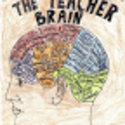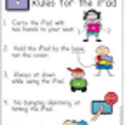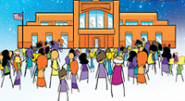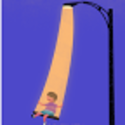-
About
- About Listly
- Community & Support
- Howto
- Chrome Extension
- Bookmarklet
- WordPress Plugin
- Listly Premium
- Privacy
- Terms
- DMCA Copyright
- © 2010-2025 Boomy Labs

 Educators Technology
Educators Technology
Listly by Educators Technology

I come across this awesome graphic while I was pooling resources for an article I am preparing on gamification in education. I will be sharing with you some great resources on this topic in the next coming posts.

Have you ever wondered what makes up teachers' brain ? Is it the same or we have a brain that is different than the others? are we left or right brainers ?

Since the incarnation of web2.0 technologies, the world witnessed transformative changes in the way human knowledge is stored and shared. Web-based tools provide innovative ways to address day-to-day activities in everyday life and most importantly in education. Current educational technology specifically enables communication that facilitates collaborative discussion, exchange of opinions and critical thinking.

Below is an interesting infographic I come across in Daily Inforgraphic.This graphic features some scientific facts about the impact of the act of writing on our brain. I find these facts and stats very enlightening and thought you might want to have a peek as well. Enjoy

If you are using your mouse to find your way around Twitter website then you must be wasting some precious time that you could use for other purposes. The list of shortcuts below is , I believe, a must have for every Twitter user.

The need to develop critical thinkers has never been as urgent as it is now. In a world that is digitally focused and where there is an outpouring of information surfeit, students need to be equipped with the right tools to live up to the new learning exigencies.

Do your students need a reminder of what a teacher librarian really does ? Here is an awesome infographic from anethicalisland featuring the 27 things teacher librarians do. A quick scan of these 27 roles reveals how digital and information literacy has made its place among top priorities in the work of a teacher librarian.

You might think of email literacy as old school particularly with the huge embrace of mobile technology and smart devices, yet students still require an explicit instruction on how to handle their emails appropriately. I am talking here about the use of emails in academic settings like in schools, with teachers administrators ..etc.

I just came across this handy infographic and find it really worth sharing with you here in Educational Technology and Mobile Learning. This infographic illustrates what everyone needs to know about the Common Core State Standards. Special sections for teachers and students include great tips on how to prepare for the coming rigor and complex test items on the Common Core assessments.

Developing and maintaining a productive workflow while using iPad is not an easy thing to do. It does not only take knowing and installing all the necessary apps, students need to build a momentum , working on their apps and using them judiciously. Building such a momentum is a process of habituation that calls for repeated actions.

Two years ago when I first started thinking about a topic for my thesis study, my supervisor, knowing that I am deeply interested in technology integration in education, he gave me a bunch of books and told me that they would help me hone in my research perspective and narrow down my research topic.

It's amazing how technology has transformed the way education is being delivered. In the midst of the new learning needs there appeared a wide range of differing learning styles. Students'use of technology have been very much dependent on the internet bandwidth they have access to.

As I was working on "15 apps for learning activities in BYOD classrooms" I came across these wonderful graphics in my BYOD archive here in Educational Technology and Mobile Learning. I thought it would be handy to put them together in a single post for you to use and refer to whenever needs be.

With the massive uptake of social networking sites, social media has become part and parcel of our digital life.Your daily dose of social media depends on how much time you have to spend on such virtual networks.

With the turn of the 21st century, the "social web" saw an explosive growth in the number of online social networking sites. These virtual platforms have gained so much in popularity that their members now count in millions.

The Digital Citizenship page I started here almost a year ago is now growing bigger and bigger and contains all kinds of resources teachers would need to effectively instruct their students on this concept. Part of what we talked about in yesterday's graphic is the importance of students being aware of what they share on social media websites.

Today while I was wading through my Feedly feeds I came across these beautiful quotes posted in My Modern Net. These quotes jumped out to me as they are paired with some clever illustrations. You might have already come across some of them somewhere else but the illustrations are really unique and probably say more than what the words themselves communicate.

A new digital offspring has recently seen the light in the visualized world. This is called infocomic, a breed of infographics, and is basically a mixture of comics and attractive visuals. This is the first infocomic I am sharing here in Educational Technology and Mobile Learning.

If you are running short of ideas on how to spend your summer after a busy school year, We Are Teachers have plenty of ideas for you. They have designed this beautiful infographic featuring 15 things you can do to have a perfect summer.

One of the few words that have really puzzled my English vocabulary are : nerd and geek. These terms are used differently by different people. They are what linguists call portmanteau words which you can use according your temperament or mood.

Edmodo is one of the promising web technologies that is making a strong foothold in the field of education. It has been embraced by several school districts and is being widely used to host online classes and connect students with their teachers. I personally see edmodo as a very robust alternative to the traditional Moodle.

Technology is radically transforming the way education is delivered and part of this transformation is taking place right inside our classrooms. From the ancient one-room school to the 20th century classroom where we have been taught, the classroom, as a pedagogical concept, has never witnessed such a transformational revolution as is the case now with the uptake of digital technology.And guess what this is only the beginning.

Below is a graphic I have bookmarked for several days now but forget about it till today. I spent some time going through its content together with checking some of the sources mentioned in the webliography in the bottom section and decided to share it with you here.

One of the challenging tasks facing teachers in today's learning environments is increasing students engagement. I said challenging because our students' attention span is very short and unless you make your learning tasks appealing to them you will never succeed in keeping them on task.

From the Bill of Rights to Edward Snowden, There has always been a battle between the right to privacy and the prying eyes of the government. Should privacy be compromised for security, or security for privacy? Following is a great graphic on some events that took us from the Fourth Amendment to Prism.
